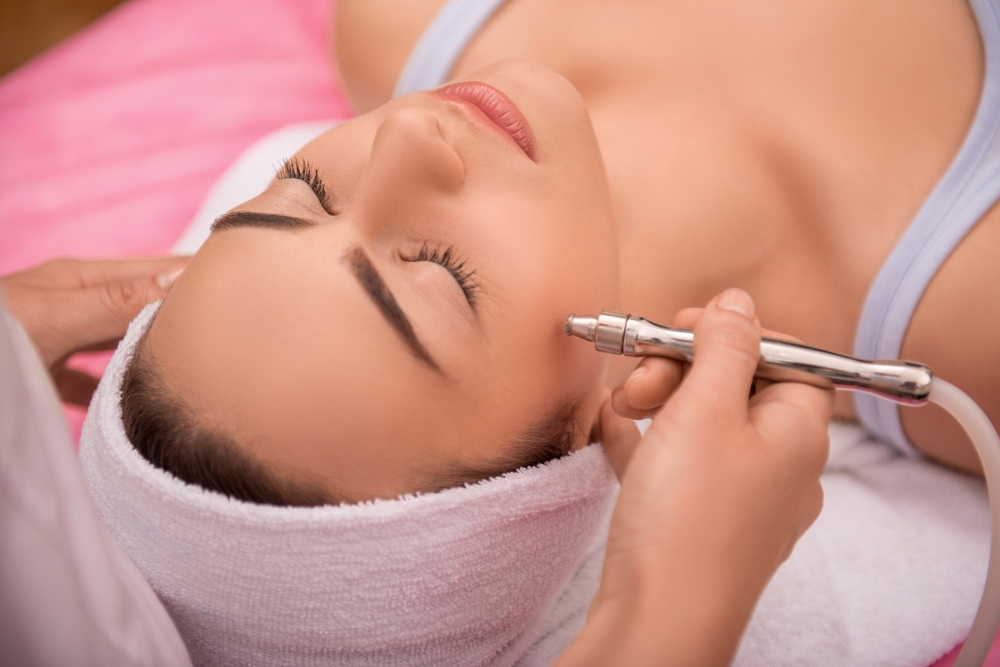The desire to look younger is nothing new, ancient cultures had many potions or elixirs designed to keep a youthful appearance. Breakthroughs in science have provided some incredible anti-aging skincare ingredients, but there is no magic product that will erase years from your face as soon as you apply it. A great skincare routine is a huge part of maintaining a young visage, but when you need a little extra help, there are anti-aging facial treatments available. Below, find out about three of the least invasive, yet effective, anti-aging facial treatments.
Facial Massage
You know if you want to keep your arms and legs looking long and lean you need to work the muscles and keep them toned, but you probably don’t think about your face that way. Ymedisour facial muscles require attention as well to maintain a younger looking face particularly because when your facial muscles are tense, they encourage wrinkles. Julia Baba, an esthetician at The Spa in Toronto’s Four Seasons Hotel, advocates for facial massages saying they are an amazing anti-aging treatment that you can do daily at home and just one to two minutes per day can provide anti-aging results. The main rule when giving yourself a facial massage is to avoid pulling or tugging at your skin. Use different motions like tapping or softly pinching near your eyebrow area and always massage in an upward circular motion because as Baba says, “you want to work against gravity so that everything goes up.”

Energy Facial Treatments
Lasers are a popular and effective method of addressing signs of aging on your face, but they are also a significant investment and may require multiple treatments. Energy facial treatments are growing in popularity as are the number of medispas or cosmeceutical treatments. The energy facial you receive will be based upon the doctor or medispa you visit, but these treatments have one major thing in common: heat. Many treatments use ultrasound, radio-frequency rays or micro-currents to firm your skin. The idea behind energy facial treatments, which you could do on your lunch hour and return immediately to work, is that the heat used “tricks” your skin into believing it has been damaged so that your skin will remedy the problem with an increase in collagen production. Energy facial treatments are non-invasive and provide immediate results, though the results are temporary.
spa you visit, but these treatments have one major thing in common: heat. Many treatments use ultrasound, radio-frequency rays or micro-currents to firm your skin. The idea behind energy facial treatments, which you could do on your lunch hour and return immediately to work, is that the heat used “tricks” your skin into believing it has been damaged so that your skin will remedy the problem with an increase in collagen production. Energy facial treatments are non-invasive and provide immediate results, though the results are temporary.
Facial Fillers
Botox has been around for ages and it continues to be used frequently as a way to treat sagging skin and wrinkles. While women today want to eradicate wrinkles and look younger, many women are concerned that traditional plastic surgery or Botox will look “fake” and “plastic,” and they desire a treatment that reduces wrinkles and leaves them looking younger, but still natural. When done by a skilled cosmetic dermatologist or plastic surgeon, fillers can have a dramatic effect while remaining more natural looking. Hyaluronic acid as a filler is gaining popularity not only because it fills in lines and wrinkles, but it can actually lift problem areas as well. Frederic Brandt, a dermatologist in Miami and New York, says that when done properly, one can expect a replenishment of youthful contours such as chins, jawlines, cheekbones and temples and lifting of the face. On certain areas, you can place the filler under the muscle, which will add volume but also give a more contoured and structural effect.” According to Brandt, these facial fillers can last up to two years, but proceed with caution when selecting a doctor. “The filler is only part of the equation. The technique in which it’s used is an equally or more important part of the treatment,” notes Brandt.
Prevention is key in the fight against aging, so protecting your skin as best as you can early on will result in less work as you age. Always wear an SPF not only on your face, but down your neck and chest too because these areas show signs of aging as much, if not more, than your face. Be consistent with proper skincare and add a facial massage to your nightly routine and when you need more serious help, look for anti-aging facial treatments like the above to give you a younger, yet natural looking face.





